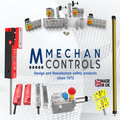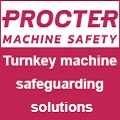
Posted to News on 1st Mar 2017, 12:25
Key considerations for OEMs selecting electric motors
With numerous characteristics to consider, each impacting on the performance of a motor in its application, the motor selection process can seem daunting. Lammers Exico's Managing Director Jerry Hodek offers some guidance.
Selecting electric motors can be critical for OEMs. If the motor is under-specified it can impact on system performance and will potentially fail prematurely. If it is over-specified it may have high running costs. But correct motor specification can bring many benefits to the OEM and end-user, including reduced size, lower running costs and an overall competitive advantage.
There are many parameters that need to be considered in any motor selection process, starting with speed, torque, load profile and duty cycle. Engineers may also need to consider the motor's size and weight, while noise could also be important.
Further, how will the motor be controlled, and what are the energy efficiency requirements? What are the mounting arrangements, and does the operating environment demand an IP rated unit, temperature resilience or washdown capabilities?
There are likely to be other factors to consider too, and it may turn out that they cannot all be optimally addressed, that some compromises are required. With each application having its own unique needs, engineers may at times need to prioritise operational parameters, and look at the best compromise for others.
Motor load characteristics
Speed and torque will usually be the starting point for any motor selection process, determining the motor's performance and size. Generally loads are either constant torque or variable torque, with the latter further divide into those with gradual torques changes, such as fans and blowers, and those with abrupt changes such as lifts and conveyors.
When addressing sudden torque changes engineers should look for a motor where the speed-torque curve exceeds the application's load requirement. When torque load changes are gradual it is more important to consider the highest continuous load point, which will typically be at the fastest speed. Starting torque is also a major consideration, particularly if the motor is required to start under load.
Considerations about the duty cycle may be a bit counterintuitive. When a motor is to be run nearly constantly, there are firm conditions for sizing the motor and many of the performance parameters become "stabilised'. Intermittent duties may seem to offer a motor a less demanding working life, but high frequency inrush current at each start up may cause repeated thermal stressing.
Torque and speed calculations will lead to an overall motor power. Obviously a motor should not be underspecified in terms of power; that will inevitably lead to performance problems and potentially shortened life, both of which will impact on the OEM's reputation. But engineers should also avoid the temptation to over-specify a motor. Not only will this add to running costs for the end user, but it is also adding to component costs, and potentially increasing motor size to the point where it can impact significantly on the overall system footprint.
An important issue often overlooked is to consider a motor's acceleration torque in some detail. For instance, a motor with good starting torque and pull-up torque will start much more quickly, so for applications where acceleration up to speed is important motors with this characteristic should be used. If the motor is to run in a field weakened mode (e.g. when VSD driven), a motor with high "breakdown torque' may be preferred as it will maintain torque output over a wide speed range.
Finally, in terms of load characteristics, overload possibilities must be reviewed. Motors are rated to run at a specified level of overload without damage. This may be stated as a percentage of rated power or as a service factor, and must be considered for safety and to optimise motor life.
Motor efficiency ratings
Much has been written in recent years about motor efficiency ratings, and engineers should always look at motor power requirements to determine, at the very least, the minimum efficiency rating. The baseline is now IE3, although if the motor is to be driven by an inverter, IE2 may still be applicable and may well be the best option.
IE4 is also an option and IE5 motors are coming onto the market. There are cost implications when buying more efficient motors, but the motors will generally be smaller and may offer other advantages too.
Environmental conditions
Ambient environmental considerations will always be a key issue in motor selection. Most standard motors are designed for a clean, dry, room temperature environment. Obviously a much more highly protected motor will be needed if the eventual application is to be out of doors, or if there are high levels of dirt, dust, water splash or even washdowns. Marine and shoreside applications generally require special motors.
High ambient temperatures, raised humidity, corrosive environments and even altitude all effect a motor's long term performance, so must be considered from the outset. For instance, the temperature may impact on the required insulation class, or may suggest the use of a cooling system.
Similarly, the motor's IP rating will give an indication of suitability for use in dusty or water-splash environments. Finally within environmental considerations, engineers may need to assess whether motors will be operating within explosive atmospheres, and look at ATEX ratings accordingly.
In conclusion
We have reviewed the main considerations for motor selection, but there may be other issues too. For instance, the way the motor is mounted could be a major issue if dirt traps are to be avoided or vibration has to be minimised. Some motor makers may be able to supply motors that have non-standard dimensions that fit your application well. Other makers, Lammers Exico among them, offer high-level customisation services, while reliable delivery or world-wide servicing may be essential requirements.
With so many issues to consider, the best approach is usually to engage the expertise and experience of a reputable supplier, discussing applications requirements thoroughly and following advice.
Learn more about motor selection and view Lammers Exico's product range at www.exico.co.uk.
Want the latest machine building news straight to your inbox? Become a MachineBuilding member for free today >>
4 Stanton Close
Finedon Road Industrial Estate
NN8 4HN
UNITED KINGDOM
+44 (0)1933 277930

















